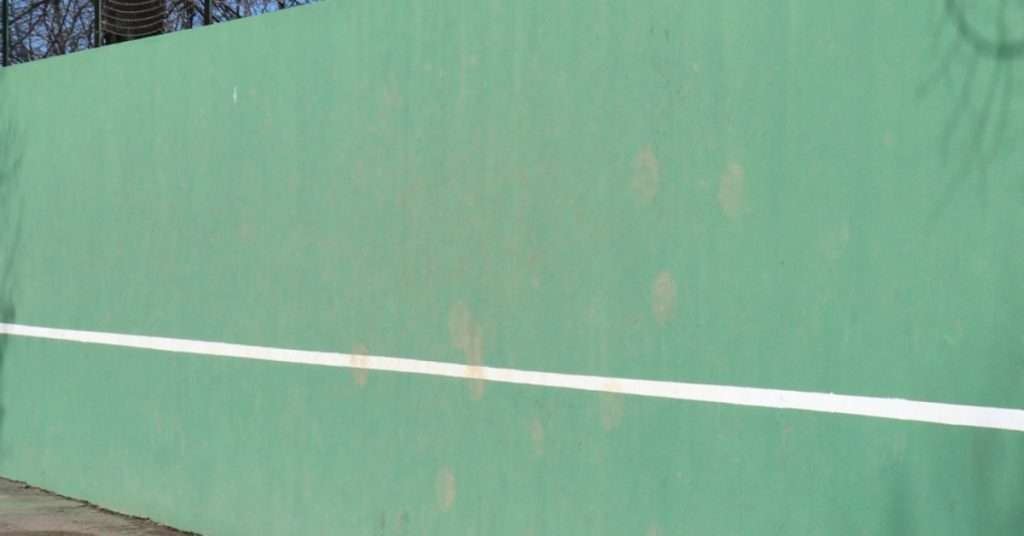In the fast-paced and unpredictable world of tennis, victory can come in many forms. But what if we told you that there’s a way to win a match without even stepping foot on the court?
Enter the mysterious and elusive “walkover” – a term that may leave even the most seasoned tennis fan scratching their head.
Fear not, as we delve into the fascinating world of walkovers and uncover the reasons behind this unusual occurrence. From injuries to emergencies, we explore the unexpected twists and turns that can lead to a player being awarded victory without ever picking up their racket.
Sit back, relax, and get ready to discover the surprising truth behind this often-overlooked aspect of the tennis world.
Causes of a Walkover
A walkover in tennis occurs when a player withdraws before a match takes place. Various causes can lead to a walkover, such as injury, illness, personal circumstances, administrative errors, refusal to play, and default. The following sub-sections will discuss these causes in more detail.
Injury or Illness
One of the most common reasons for a tennis walkover is due to injury or illness. A player may suffer an injury during warm-ups or become seriously unwell between matches, preventing them from participating in their next scheduled match.
Personal Circumstance
Another cause for a walkover in tennis is a personal emergency or circumstance involving the player. Family emergencies, legal concerns, or other personal issues may force a player to withdraw from a match.
Administrative Error
Occasionally, administrative errors such as scheduling conflicts or registration issues may lead to a walkover. In these cases, the tennis player may not be able to participate due to circumstances beyond their control.
Refusal to Play
A walkover may also occur if a player refuses to play for various reasons, such as a disagreement with tournament officials or dissatisfaction with court conditions. This type of walkover is relatively rare and often results in penalties for the player who refuses to participate.
Default
Finally, a default occurs when a player fails to meet specific tournament requirements or violates tournament rules, resulting in their automatic withdrawal from the match. Defaults are considered walkovers as the player’s opponent is awarded a win without playing the match.
Does a Walkover Count as a Win?
In tennis, a walkover occurs when a player is unable to participate in a scheduled match due to unforeseen circumstances such as injury or illness. As a result, the opponent is declared the winner and proceeds to the next round of the competition. However, the question arises whether a walkover counts as a win for the advancing player.
According to various sources, a walkover does not count as a win or a loss for either player. This means that the player who advances to the next round due to a walkover will not have an additional win added to their records, and the player unable to play won’t be given a loss. In other words, walkovers do not impact the players’ win-loss ratios or overall statistics for their careers.
Despite not counting as a win or a loss, a walkover can still have implications in terms of ranking points. The rules regarding walkovers and ranking points differ between the Association of Tennis Professionals (ATP) and the Women’s Tennis Association (WTA).
It’s important to note that a walkover in tennis is simply a way for the tournament to proceed when a player is unable to participate in a scheduled match. It does not count as a win or a loss for any player involved and has limited impact on their overall statistics and records.
Walkover Rules and Regulations
A walkover in tennis refers to a situation where a player advances to the next round without playing the match, typically due to their opponent’s inability to participate. This can occur for a variety of reasons, including injury, illness, or code of conduct violations. The rules and regulations governing walkovers differ slightly between organizations, such as the ATP, WTA, USTA, and LTA.
ATP and WTA
The ATP defines a walkover as a match that did not begin because the losing player was either ill, injured or subjected to penalties of the Code of Conduct before the match started, according to the official rulebook. The WTA has similar guidelines, with walkovers typically granted when one player is unable to compete due to injury, illness, or other reasons that prevent them from participating.
USTA and LTA
The United States Tennis Association (USTA) and Lawn Tennis Association (LTA) also have specific rules regarding walkovers, primarily based on illness, injury, or absence. While the exact regulations may vary, both organizations prioritize the safety and well-being of the players and adhere to a similar set of criteria for granting walkovers.
Retirements and Withdrawals
Distinct from walkovers, retirements happen when a player experiences a medical issue during a match and is unable to continue. Withdrawals are cases where a tennis player decides not to play with less than 24 hours notice due to injury, illness, or personal emergency.
Penalty System
When it comes to walkovers involving code of conduct violations, professional tennis organizations have penalty systems in place. These penalties include point deductions and possible suspension from future tournaments. Depending on the severity and frequency of the violation, walkovers may be granted in these cases to ensure fair play.
Impact on Rankings
In terms of rankings, walkovers do not carry the same weight as outright match victories. While the player who advances through a walkover gains rankings points, they may not earn as many points as they would have from an actual win. However, because they have reached the next round without playing, the player’s chances of acquiring more points in the tournament are improved.
Effects of a Walkover on a Tournament
A walkover in tennis occurs when one player advances to the next round without actually playing the match, due to their opponent’s inability to compete. This can have various impacts on the tournament, affecting aspects such as draws and lucky losers, scheduling, prize money, and ranking points.
Draws and Lucky Losers
When a walkover occurs, it changes the composition of the draws for the next round, since one player advances without playing the match. In some cases, a “lucky loser” from the qualifying rounds can be introduced into the main draw to fill the spot left by the withdrawing player. However, this usually happens when a player withdraws before the first match and not due to a walkover in subsequent rounds. Lucky losers can benefit from this unexpected opportunity and may create an upset in the tournament.
Scheduling
A walkover also affects the scheduling of the matches in the tournament. When a walkover occurs, it creates a gap in the schedule, which the tournament organizers might need to fill with other matches or events. In some cases, the time slot might remain empty, leading to fewer matches for the spectators to watch on that particular day.
Prize Money and Ranking Points
When it comes to prize money and ranking points, walkovers have a distinct effect on both players. The player who advances to the next round due to a walkover receives the full prize money and ranking points for that round, as if they had won the match normally.
On the other hand, the player who had to withdraw receives the prize money and ranking points for the previous round, as if they had lost the match. This situation can lead to significant changes in a player’s financial status and ranking within the sport.
Unusual Walkover Cases
While walkovers in tennis are typically due to injury, illness, or penalties, there have been some unusual cases throughout tennis history. In this section, we will explore unique walkovers involving John McEnroe and Eugenie Bouchard
John McEnroe’s Defaults
John McEnroe is a former tennis champion known for his fiery personality and on-court outbursts. His sometimes unsportsmanlike behavior led to several defaults during his playing career.
John was disqualified from the Australian Open in 1990 after being cited three times for unsportsmanlike conduct. McEnroe was leading Mikael Pernfors when he was defaulted by umpire Gerry Armstrong for racket abuse and using foul language.
The crowd booed as McEnroe was forced to leave the court, and he was later fined $6,500 for his behavior. The incident marked the first time a player had been ejected from a Grand Slam tournament for misconduct.
Roberta Vinci and Eugenie Bouchard
At the 2015 US Open, a peculiar walkover took place when Roberta Vinci advanced to the semifinals without playing her quarterfinal match. Her opponent, Eugenie Bouchard, slipped and sustained a concussion in the locker room, rendering her unable to compete.
Vinci went on to end Serena Williams’ winning streak, as Williams was chasing a calendar year Grand Slam, before losing in the final.
Bouchard’s injury resulted in an unusual circumstance where an off-court incident led to a walkover.

Introducing The Tennis Expert, your insightful guide into the world of tennis. With a passion for the game that started in childhood, they have dedicated years to studying and understanding every nuance of tennis. Their keen eye for detail and deep knowledge of the sport's strategies, history, and evolving trends make them a reliable source for tennis enthusiasts. Whether breaking down a classic match or offering tips for players, The Tennis Expert combines a fan's love for the game with an analyst's eye.



